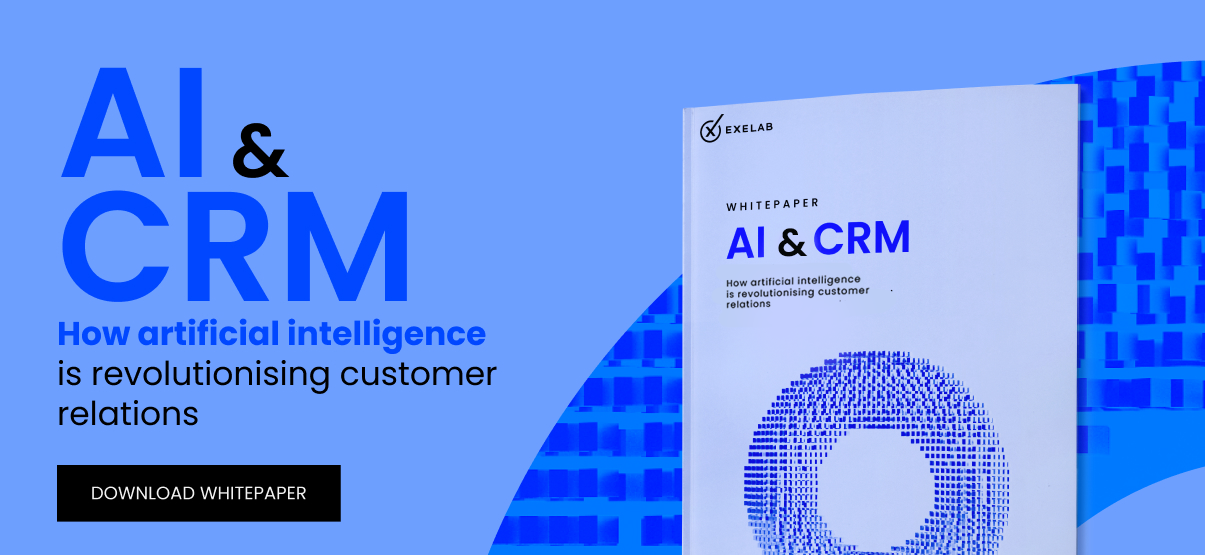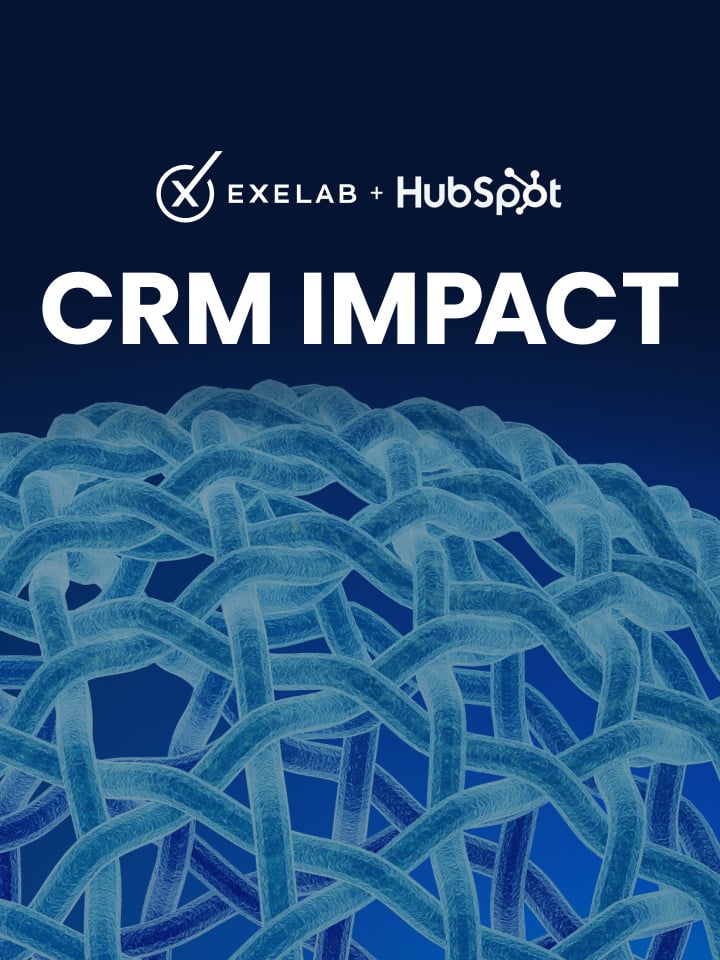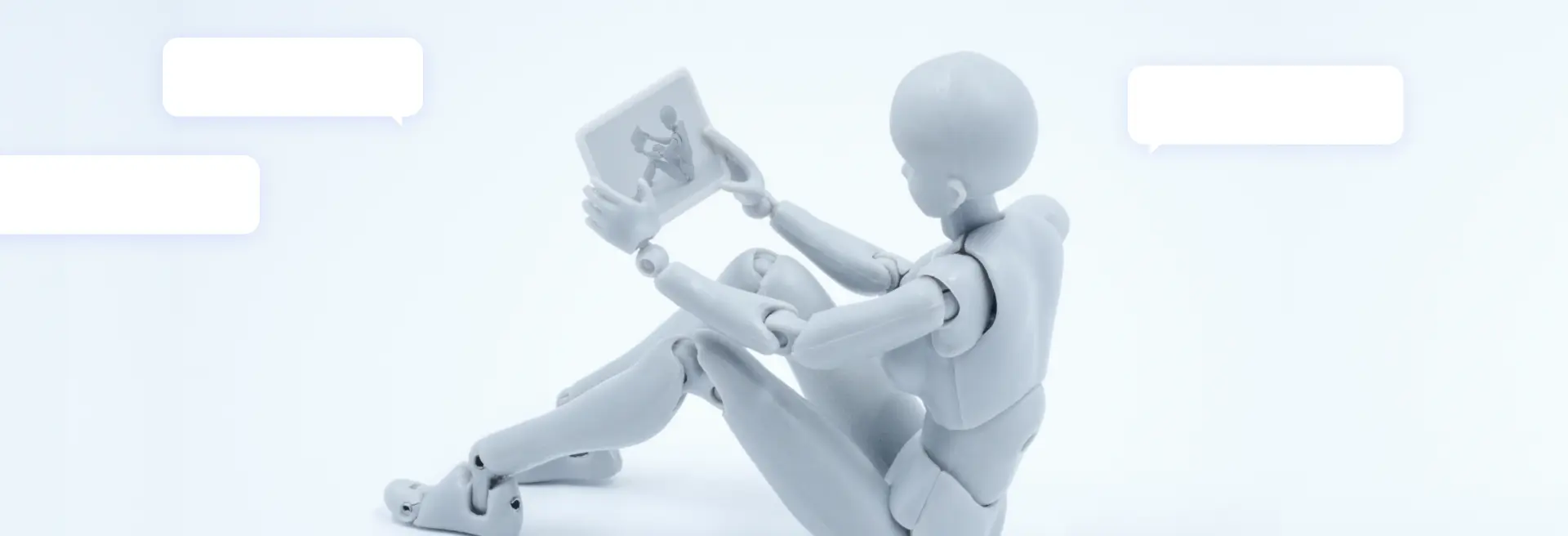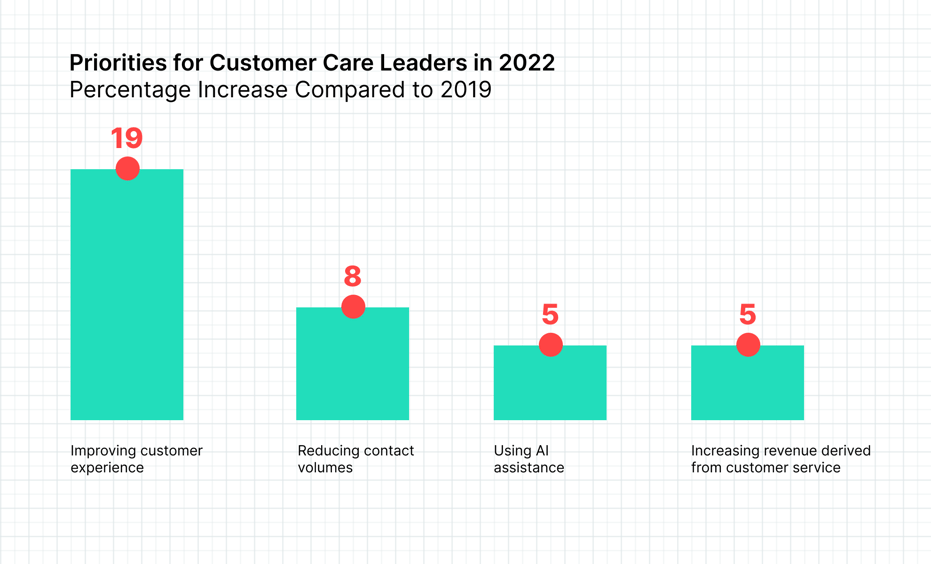
The Future of Loyalty in the Data Era
Increasingly sophisticated and personalized customer experiences...
Read moreInsights
Go to the BlogIn primo piano

The Future of Loyalty in the Data Era
Increasingly sophisticated and personalized customer experiences...
Read moreEnterprise Solutions
Recent Publications
Whitepaper

How artificial intelligence is revolutionising customer relations
Download the WhitepaperExtra
A new horizon for CRM
Automation and integration: apps

100% digital, fast and paper free processes
A new standard based on AI and HubSpot
Integrated and optimized e-commerce management with HubSpot
Exelab World
Where ideas and innovation meet
Texts to meet tomorrow's challenges
Discover our insights: visit the blog
Insights
Go to the BlogIn primo piano

The Future of Loyalty in the Data Era
Increasingly sophisticated and personalized customer experiences...
Read moreAbout Us
Innovation, excellence, technology: at Exelab we design the future of business processes
Exelab and The Client Group: an operational synergy to raise customer experience to the highest level
Careers
We are always looking for talent ready to make their mark: explore our opportunities
We're hiring!Exelab is an official partner of


Events
Discover our EventsMost Recent Event

Solutions
Enterprise Technology
HubSpot
Discover
About
Solutions

Exelab Solutions
Insights
Go to the BlogIn primo piano

The Future of Loyalty in the Data Era
Increasingly sophisticated and personalized customer experiences...
Read moreEnterprise Technology

Enterprise Solutions
Recent Publications
Whitepaper

How artificial intelligence is revolutionising customer relations
Download the WhitepaperHubSpot

Extra
A new horizon for CRM
Automation and integration: apps
Discover


100% digital, fast and paper free processes
A new standard based on AI and HubSpot
Integrated and optimized e-commerce management with HubSpot
Exelab World
Where ideas and innovation meet
Texts to meet tomorrow's challenges
Discover our insights: visit the blog
Insights
Go to the BlogIn primo piano

The Future of Loyalty in the Data Era
Increasingly sophisticated and personalized customer experiences...
Read moreAbout

About Us
Innovation, excellence, technology: at Exelab we design the future of business processes
Exelab and The Client Group: an operational synergy to raise customer experience to the highest level
Careers
We are always looking for talent ready to make their mark: explore our opportunities
We're hiring!Exelab is an official partner of


Events
Discover our EventsMost Recent Event


In a survey conducted by the AI LAB research center at IULM University1 in 2020, involving a sample of 230 Italian companies across 6 different sectors, there was talk of immaturity in adopting technological solutions for Customer Service.
Today, aiming for fast, efficient service that meets customer needs, the business section of the European Commission's portal associates the quality of Customer Care and Customer Experience with a combination of technology and human interaction2.
Furthermore, in the United States, 75% of executives aim to invest in a customer service that combines robotic assistance and human contact (Deloitte, 2021).
But what drives this trend?
Is it the customer who can't do without human interaction, or is it the technology that doesn't yet have the capabilities to deeply understand their needs?
Even though virtual assistance software like chatbots, voice support, and AI can handle large volumes of requests, companies still struggle to adequately meet customer needs.
According to McKinsey3, the gaps lie in the process that transforms dialogue between agent and customer into reusable insights and knowledge.
Shifting focus to this aspect, says the American consultancy, would trigger an improvement in Customer Experience, addressing a top challenge for Customer Service leaders.

From: State of customer care survey in 2022, McKinsey
In an attempt to achieve this, a hybrid approach today is the solution that best meets customer needs. To understand why, it's crucial to analyze the two constituent parts: people and robots.
Examining a sample of 9,700 customers from retail and banking sectors in Europe (of which 1,320 are Italian), Capgemini highlights that people seek an interaction as human-like as possible when using virtual assistants like voice bots and chatbots4.
Thus, looking at well-equipped customer service departments, but immature in "humanizing technology", agents still hold an essential position.
But the role of people in Customer Service is not just about empathy.
Consider scenarios where specialized skills are indispensable and must be creatively combined to solve a problem:
Or consider a scenario where assistance becomes sales:
"Empower Customer Service agents to create personalized and scalable experiences"
HubSpot
On the other hand, providing quality customer experiences and efficient service would not be possible without robotic and automation systems for Customer Service.
Indeed, self-service automation technologies are now considered a top investment priority for European companies5.
But to transform customer interactions into useful knowledge for the future, one of the biggest challenges is increasing the adoption of these technologies by customers themselves.
This aspect isn't just linked to the type of tool chosen. Assuming the use of flexible virtual assistance software set up to meet the most common sector needs, the ability to solve specific problems impacts adoption.
Deloitte hits the mark when discussing the Customer Effort Score (CES), the KPI that is becoming among the most observed metrics, standing alongside First Time Resolution, C-SAT, and the Service Level Agreement6.
CES measures the ease with which the customer can contact the department and communicate their issue.
It determines the barrier between agent and customer, which can be narrowed in various ways. First and foremost is giving agents visibility into more than just basic data, such as annual spending volumes, loyalty level, and NPS score.
Swiss Post is an example of the correct combination of technology and human assistance.
Serving 2.5 million customers a year, the Swiss postal service couldn't achieve satisfactory support performance.
Thus, they decided to add an additional channel, Whatsapp, to their existing chatbot and live chat tools.
Combining these channels with their CRM capabilities, Swiss Post increased personal communication with their customers, gathered more specific information, achieved a 70% FCR (First Contact Resolution), and reached an AHT (Average Handling Time) of 7 minutes.
For a high-performing Customer Service department, humans and technology must collaborate to collect information that remains valuable over time, improves service personalization, and strengthens the customer-company relationship.
1: IULM AI LAB, UMANIA 2020: automazione intelligente per aumentare la soddisfazione del cliente nel customer care
2: Commissione Europea
3: McKinsey, The vision for 2025: Hyperpersonalized care and ‘care of one’, 2022
4: Capgemini, 2019
5 : Deloitte, 2022
6: Deloitte, 2022